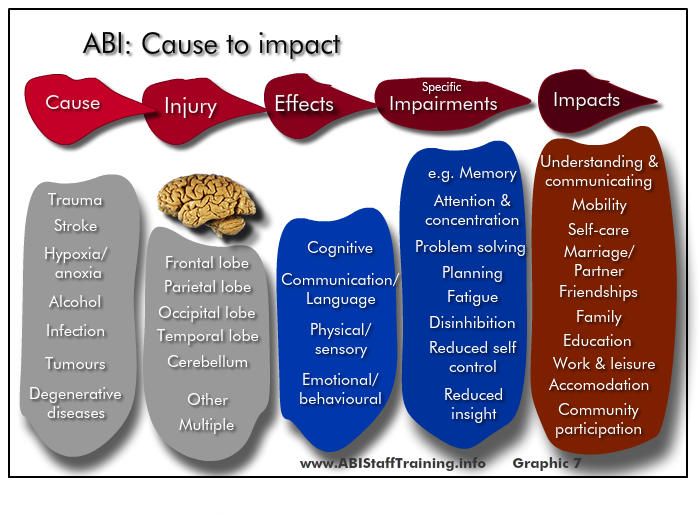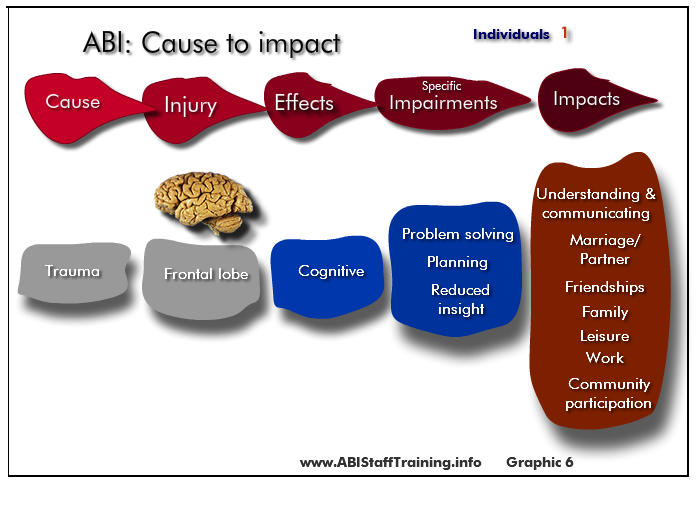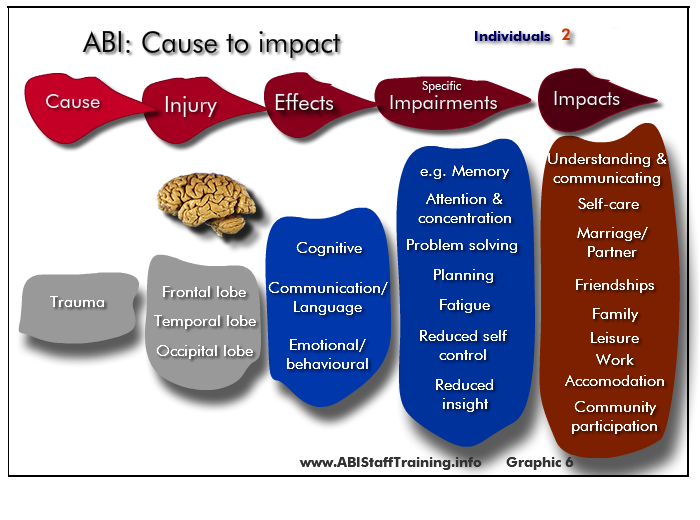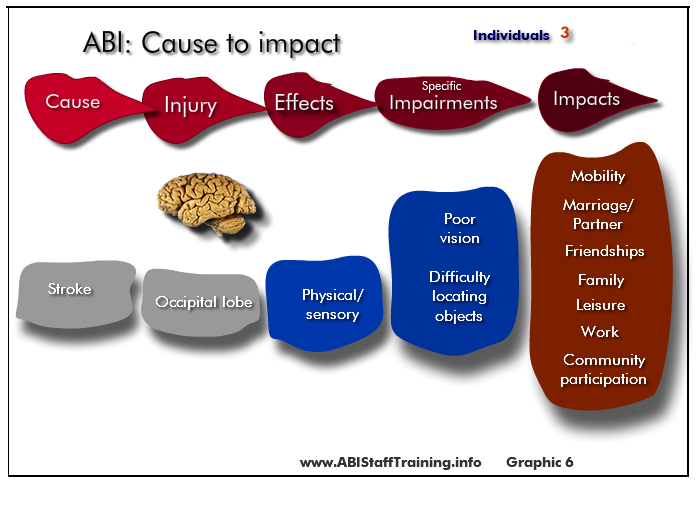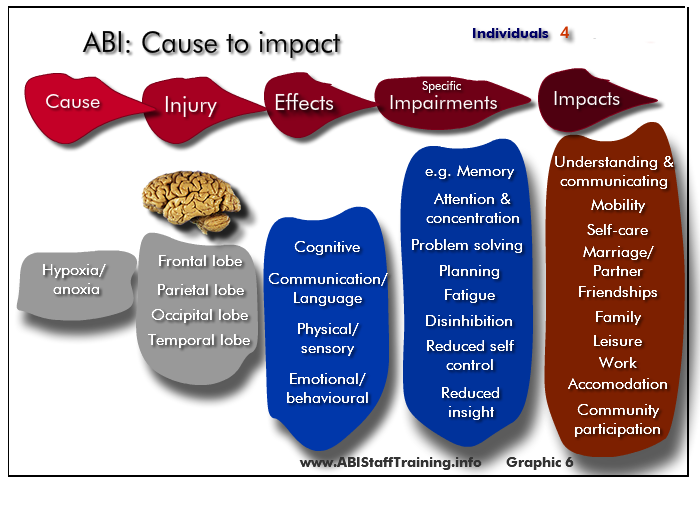- MODULE 1: Introduction to ABI
- Module Introduction
- Take the Pre-test
- a) A person’s abilities & life span
- b) What is ABI?
- c) Causes of ABI
- d) Incidence
- e) The brain
- f) Severity of ABI
- g) Cause to impact
- h) Rehabilitation
- i) Rehabilitation stages & pathways
- j) Common effects
- k) Impacts on life
- l) People with ABI
- m) Family and friends
- n) Key messages and
Tools to explore in Module 2 - o) Building skills
- Take the Post-test
g) Cause to impact 
SLIDES:
To pause: Hover mouse over slide. To continue: move mouse off slide.
To go to a specific slide: Click on slide numbers below.
The first screen (1) is an overview.
Screens 2 to 5 show examples for four individuals.
Cause to impact
The cause of the ABI makes a physical injury to the brain (in one or more parts of the brain) which in turn has an effect in areas such as cognition, communication and language, etc which can be seen through specific impairments (e.g. memory difficulty, difficulty with problem solving) and these in turn impact on the person's life ( self-care, relationships, work).
Each person with an ABI is different because:
- the exact nature of the injury to the brain is different from one person with an ABI to the next and
- this in turn means the general effects and specific impairments are different from one person with ABI to the next and
- this in turn means the impacts on life of the person with ABI are different from one person with ABI to the next.
Four examples
In the interactive graphic above the examples are:
1. Traumatic brain injury causing injury to the frontal lobe
2. Traumatic brain injury causing injury to the frontal, temporal and occipital lobes
3. Stroke causing injury to the occipital lobe
4. Hypoxia/anoxia causing injury to the four lobes (and other parts of the brain).
